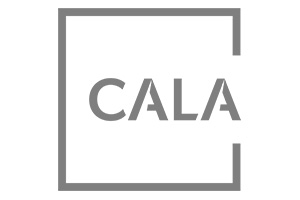Electricity lines and cables, water, oil and gas pipelines, and telecommunication apparatus affecting land are usually regarded as constraints but the agreements relating to them could lead to an opportunity.
Constraint or Opportunity?
If you are a landowner, a commercial or residential developer or a residential property owner and your land / property is affected by any of the following constraints:
• Overhead electricity lines
• Water mains
• Sewers
• Gas mains and oil pipelines
It may be possible for you to have them diverted or to claim compensation for their presence.
If the utilities have yet to be installed you may be able to negotiate with the utility company to change the route of the utility. You could also claim compensation for the impact of the utility and the works carried out on your property / land.
Electricity Lines, Cables and Apparatus
Most people are aware that the presence of an overhead line will have an adverse effect on the value of a property on the land affected by the line, but few people realise that they can seek compensation, even if the land or property was purchased after the line was installed or if the property was built at a later date.
Overhead lines can seriously devalue a property due to their visual impact and public perception of the health risks associated with them (regardless of the lack of scientific proof). This loss in value can vary considerably (from 0% up to 30% of a property’s value) depending on the distance of the line from the affected land/property. The loss in value will also be determined by the size of the line and its orientation relative to the affected land.
There are a number of criteria which must be satisfied before a claim for loss can be made:
- The equipment must pass over the boundaries (even if the cables only swing over them in times of strong winds)
- There must be an existing terminable wayleave agreement in relation to the equipment (a specialist surveyor will be able to confirm this)
- The equipment must be close enough to the property to be causing a loss in value (see above).
Developers of residential schemes, for instance, can claim for the material loss of housing plots on land beneath overhead lines, as this land cannot be built on and has effectively been ‘sterilised’. They can also claim for visual impact and public perception of health risks (as mentioned above) and the adverse effect these are likely to have on sale prices of future properties).
Water Mains and Sewers
According to Section 159 of The Water Industry Act 1991, the water industry and the Environment Agency are legally entitled to lay pipes in private land. This can only be carried out once reasonable (defined) prior notice has been given to the owner and occupier but no consent or approval is otherwise required from the owner. If the owner objects, they can exercise the right to use compulsory powers to lay the pipes. Unlike the process of installing overhead lines, there is no right to object and there is no procedure in place for dispute resolution.
The rights required for water, sewerage or drainage pipes are usually set out in a legal deed of easement, by lease or by sale of the subsoil in which the pipe is to be placed. An agreement reached through negotiation will usually afford the landowner better protection than if compulsory powers have been used.
Pre-existing pipes are usually covered by a formal deed setting out the rights of the parties, or otherwise they are protected by statute. In most cases, no payment will be due for an existing water or sewer pipe.
However, Schedule 12 of The Water Industry Act 1991 also states that:
“If the value of any interest in any relevant land is depreciated by virtue of the exercise, by any relevant undertaker, of any power to carry out pipe-laying works on private land, the person entitled to that interest shall be entitled to compensation from the undertaker of an amount equal to the amount of the depreciation”
As well as depreciation, it is also possible to be compensated for damage and disturbance sustained during works undertaken. Again, a specialist surveyor could advise you on this.
Gas Mains and Oil Pipelines
In terms of pre-existing pipelines, which may be present in land due to be developed (for commercial or residential purposes) the use of mechanical excavators is not permitted within three metres of a high-pressure gas pipeline. National Grid Gas for instance, require a strip of land on either side of the pipeline, which will vary in width according to the diameter of the pipe.
A claim for loss could be made if:
- The pipeline’s presence is restricting development and therefore affecting the land’s development potential
- The pipeline’s presence has severed one part of the development from the other
- The land required to either side of the pipe has effectively been sterilised and therefore its development potential has been lost
Pipelines can also have an impact on public open space provision (all local authorities require a certain proportion of POS when considering planning applications for residential schemes) as trees are not permitted within 6 metres of a pipeline and only hedges with shallow roots are allowed. This could therefore have a detrimental effect on the design of a scheme and it may be possible to claim compensation for this reason.
Regardless of the type of utility, it is worth considering seeking the advice of a specialist. Rather than being something to be endured, there is often an opportunity to seek compensation or to argue for diversion or removal. If you are a developer, this could mean the difference between a rejected planning application and planning approval. It could also help to substantially increase the value of your land or property.











